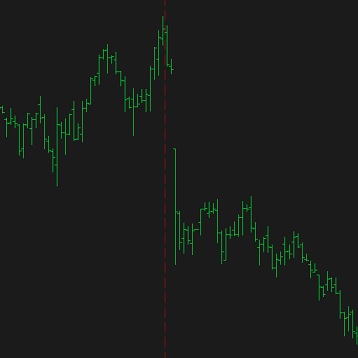
While at a birthday party, I was asked for an investment candidate that offered a minimum of a 12% annual return. I replied, “You have to walk very far out on thin ice to get that; you’re more likely to end up with a -30% loss instead.” He isn’t the only one thinking like this, so below is a more thorough explanation to make the point clearer.
U. S. government-issued debt with a maturity of 10-to-20 years is one of the many reference points that active investors should know. (As I write this, the yield on 10-year government bonds is around 2.7%). Once you double this risk-free rate (which would be 5.4%), then you’re nearing the limit of reasonable returns for a reasonable risk. What a surprise that preferred-stock dividend yields are coincidentally right around that rate (Ticker symbol PFF, a fund of preferred stocks has a current yield of 5.6%). You can use online stock screeners to sort for high-dividend stock yields that are 10% and higher, but these candidates will have huge fundamental problems, such as:
- The dividend is likely to be reduced or eliminated going forward from lower earnings.
- The price of the security is highly likely to plummet from a structural event (lawsuit, closing a plant, permanent reduction in profit margin, credit rating drop, etc.)
- The business model is erratic, cyclical, or semi-sustainable
In 2016, Mellon Capital did a 20-year study on investing in stocks with a current dividend yield of 10%. The result was these investors only received a 3% actual return due to capital losses and cut dividends. Meanwhile, those that had invested in stocks with a 6% dividend yield averaged a higher actual return of 5%. It is very tempting to reach for a 12% yield, but you will not experience that in an actual return for long. In another study, companies that have a dividend yield over 10% are forced to cut that dividend 65% of the time during the following 5 years. So the odds are against you receiving that 10% dividend on a sustainable basis.
Other ways to get investment returns of 12% or more involve more active participation from the investor: rental property, laundry mat, hard-money lender, rehabbing and flipping homes, or a restaurant franchise. But your actual return or loss depends upon your skill, knowledge, and effort. Even if you only put up money into an investment syndication (raising investor money for a large apartment complex or start-up restaurant) require effort and knowledge on your part, there is no easy passive investment with outsized returns. So, if you receive a glossy brochure and slick sales-pitch deck promising investment returns that no one else can reasonably deliver, then you are definitely too high on the risk scale – maybe you’ll get lucky, maybe you won’t. If you choose to invest in these, make sure it is a tiny amount of speculative money that you can afford to lose.
